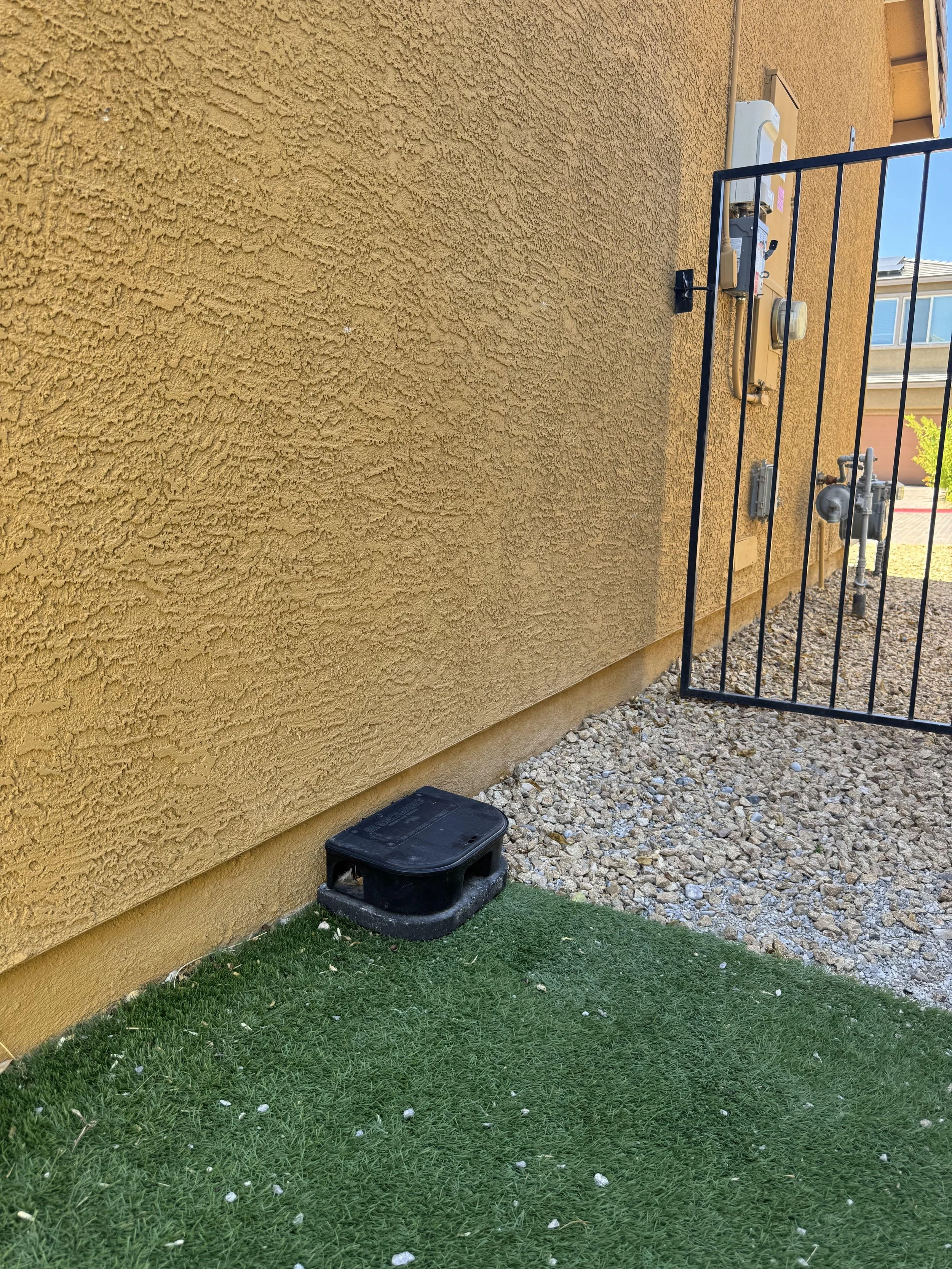
Rodent Control Services in Las Vegas & Surrounding Areas
Dealing with rats or mice? We’re here to help. EXO Environmental provides fast, professional rodent control using proven methods including strategic baiting, snap traps, and targeted poison placements.
Rodents are more than just a nuisance — they contaminate surfaces, spread disease, and damage insulation, wires, and food supplies. Our team responds quickly, places control stations in key locations, and monitors activity to eliminate infestations at the source.
Whether it’s a single mouse in the kitchen or rats in the garage, our rodent service is designed to reduce populations fast and prevent dangerous overgrowth. No gimmicks, no scare tactics — just clean, effective control delivered by trained local experts.
📞 Call Now: (702) 960-3870Our Rodent Control Process: Step-by-Step
Our service is designed to rapidly reduce rodent activity in and around your home using professional trapping, bait stations, and monitored poison applications. Every step is carried out with safety and long-term control in mind.
Step 1: Inspection
We begin by inspecting your property for signs of rodent activity — including droppings, grease marks, burrows, chew damage, and sounds in walls or ceilings. This helps us identify the severity and the best placement zones for traps and bait stations.
Step 2: Strategic Trap Placement
We install snap traps and tamper-resistant bait boxes in high-activity areas. Our traps are placed out of reach of pets and children and are designed to target rats and mice efficiently, without overexposure or excessive setup.
Step 3: Rodenticide Application (If Needed)
In outdoor or garage areas, we may place EPA-approved rodenticides inside secure bait stations. These are locked, weatherproof, and inaccessible to pets and non-target animals. Our technicians assess when and where poisons are appropriate based on the property layout.
Step 4: Monitoring and Rechecks
We offer follow-up visits to check trap activity, rebait stations, and adjust placements as needed. Our focus is on reduction and removal — not guessing. Every visit includes visual checks and updates on what’s been caught or consumed.
Step 5: Advice for Long-Term Prevention
While we don’t offer exclusion in this service, we’ll provide advice on possible entry points, sanitation issues, and what may be attracting rodents. Knowing what to look for helps you avoid future problems and gives our treatments a lasting effect.




